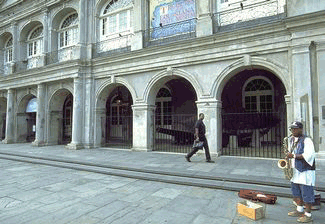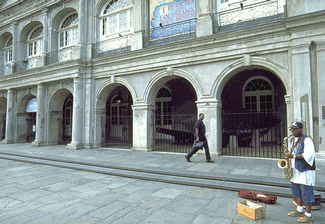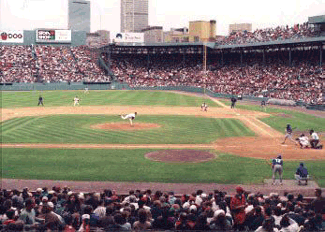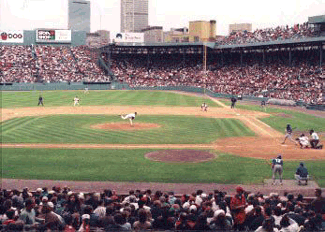Change Blindness
Introduction
When we look out at the world we seem to have an almost unlimited amount of detail available to us. But how much detail about a scene do we actually encode and remember? You might be surprised to find out that we actually remember very little about a scene that we have just looked at. This fact is revealed by a phenomenon known as change blindness.
Change blindness can be studied in many ways. The most typical paradigm for investigating it is the flicker paradigm, introduced by Ron Rensink and his colleagues. In the flicker paradigm, observers see a visual scene that “flickers” on and off. During the flicker, something in the scene changes. For example, an object might move from one position to another, change color, or completely disappear. Rensink, and many other subsequent experimenters using the paradigm, have found that experimental participants are surprisingly poor at detecting these seemingly obvious changes.
The flicker paradigm is not the only way to induce change blindness in observers. Sometimes, if the change happens gradually enough, we can fail to notice large features of a scene that either disappear or change color. Other times, magicians can use sleight of hand to distract our attention away from a change, for example, during a card trick.
How well can you detect changes in a scene? Test your “change vision” using the movies in this activity.
Click on the link for “Flicker Movie 1” at left to begin the activity.
Flicker Movie 1
At left you see a fairly simple scene from pre-Katrina New Orleans. Right now the scene is static.
Click the image (or click here) to start the flicker movie, and see how long it takes for you to detect what’s changing.
If you can’t see the change in this or subsequent movies, go through them all before clicking the Answer Key link at left.
Flicker Movie 2
Here’s a slightly more complex scene, also of a street in New Orleans.
Click the image (or click here) to start the flicker movie, and see how long it takes you to detect what’s changing.
Flicker Movie 3
This is the hotel where Martin Luther King was assassinated in 1968. Most observers find the change here more difficult to spot than in the previous two movies.
Click the image (or click here) to start the flicker movie, and see how long it takes for you to detect what’s changing.
Flicker Movie 4
Pictured is Boston’s Fenway Park during a day game.
Click the image (or click here) to start the flicker movie, and see how long it takes for you to detect what’s changing.
Movie 5 (No Flicker)
Click the static image at left (or click here) to start a movie with the same kind of change shown in the other four, but with the gray screen in between the two frames removed. The change here will be immediately obvious. You’ll have to trust us on this: if the gray screen was present, the change here would be just as hard to detect as in the previous movies.
Movie 6 (Gradual Change)
In this street scene from Grenoble, France there will be a change that occurs very slowly*. Can you find it? Click on the banner below to start the movie.
*Special thanks to Aude Oliva for providing the gradual change movie.
The Colour Changing Card Trick
Now that you have been practicing your change detection skills, see if you can spot the secret to the color changing card trick in the video below. Magicians have very good sleight of hand, so make sure to watch carefully!
Answer Key and Conclusion
Below you see the five images from the movies with the changed portions circled. Movie 1 featured an object movement (the man shifted back and forth in the center of the scene), Movies 2 and 4 included object deletions (the boy’s feet and the John Hancock Tower, respectively), and Movie 3 showed a color change (the woman’s pants).
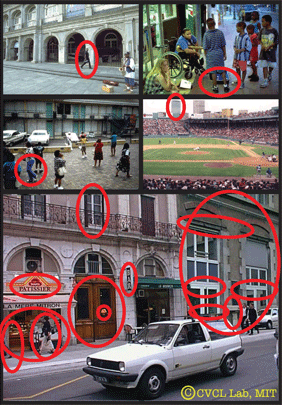
As you saw in Movie 5, these types of changes are trivially easy to detect when the flicker is removed from the movie. This indicates that the change blindness revealed in the other four movies is not due to any problem with your low-level vision. You see all the details of the scene just fine. The blindness to change occurs when you have to try to remember these details, even for the split-second that the gray screen is visible in the flicker movies.
In Movie 6, large portions of the French street scene changed over time. You may have noticed one or two changes, but chances are that you did not notice all of them. The reason most of the gradual changes went unnoticed is because the changes were so slow that your visual system couldn’t register the differences (as it could in the rapidly flickering Movie 5). Even when we are continuously looking at a scene (i.e., no blank period), we still don’t represent every feature in detail.
Did you notice all of the changes in the color changing card trick? If you failed to notice the costume changes of the two hosts, or the change of tablecloth and backdrop, it was probably because you were focusing all of your attention on the cards. This once again demonstrates that attention is a limited resource and needs to be allocated to an object in order to detect a change.

